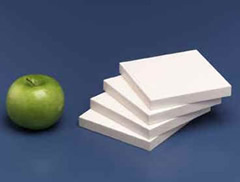Current design trends indicate wider use of ceramics, for vehicle armoring as they lower the overall weight, while enhancing abilities to defeat ballistic threats. Composite ceramics can be used in layered formations, matrixes of different materials or monolithic elements. Typical materials used for this application are Alumina, silicon carbide (SiC), boron carbide (B4C) and titanium carbide and titanium diboride, these are lighter than most metals, including titanium, by a factor of 2 – 3. While monolithic ceramic elements can be used, most vehicle protection applications are utilizing composites of several materials, which offer improved endurance tenacity, imperative for advanced protection and survivability.
The physical properties of ceramic materials have been recognized for many years. However, manufacturing techniques limited their utilization to relatively small parts and simple shapes. Recent advances in manufacturing process offer lower cost production techniques of larger, more complex structures. Some of these cutting edge procedures are also employing exotic technologies which dramatically improve the physical characteristics of the end product. Among these are the Fibrous Monoliths (FM) and Displacive Compensation of Porosity (DCP) ceramic materials manufacturing technologies, the use of nanoparticles in raw material powders and coating, and deposition new concepts for treatments of metallic structures – such as metal matrix composites (MMC), and liquidmetal.
Additional parts of this article:
















